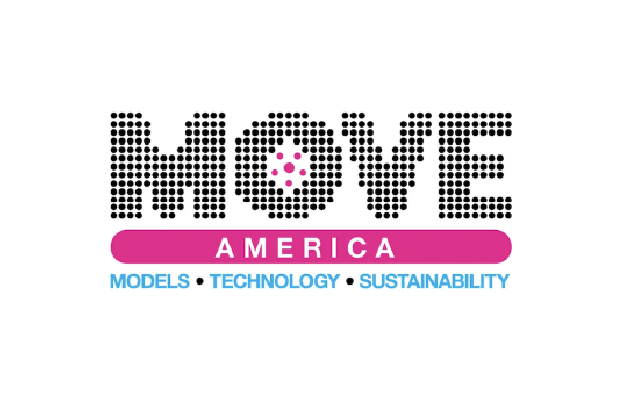Technology-based solutions will boost transit ridership post-pandemic. Pretty lofty statement. With a claim this grand, you might find yourself posing a much-needed follow up: Well, whose ridership?
- Ridership in a sprawling entertainment and business hub?
- What about a small city in rural Ontario?
- Or maybe one that feeds into the most populous urban area in the United States?
- Would that solution also work for a transit authority serving 80% of a US state’s population?
Turns out, the answer is yes, yes, yes, and yes. That’s according to representatives from four of Via’s partner cities who joined Chris Snyder, Via’s SVP of Expansion, to talk all things TransitTech during MOVE America 2020.
Straight to the numbers
Brain Platt, City Manager and COO of the City of Jersey City, described the state’s first on-demand service as “a phenomenal success.”
“Every time we add a new van, it’s full, and utilization rates are soaring...we’re hitting records every day in the midst of this pandemic where other, more typical transit services — such as subways and buses and light rail — are down 80-90% or more. We’re seeing a lot of increases in demand [for microtransit].”
On the opposite side of the country, Los Angeles County Metropolitan Transportation Authority (LA Metro) runs an on-demand network that serves sprawling LA County — another densely populated urban area that delivers transportation options to roughly 10 million Los Angelenos. “We’re hitting records every day.” LA Metro launched its on-demand service to provide a first-and-last mile solution for individuals traveling to and from Metro stations — increasing mobility equity, while also reducing congestion and greenhouse gas emissions in what Avital Shavit calls a largely “auto-centric” region. Shavit is the Senior Manager of the LA Metro’s Office of Extraordinary Innovation and she says that ridership bouncing back is all about flexibility.
“Right now we’re at about 50% of our pre-COVID ridership on all of our bus and rail across LA County, but we have higher ridership on our Via service than we ever have had before.” Shavit credits this phenomenon to the flexibility of on-demand transit — specifically, a swift service adjustment from first-and-last mile to origin-to-destination service at the start of the pandemic.
Nicole Maione, Manager of Transit and Parking in Sault Ste. Marie, Ontario noted that The Soo (as residents affectionately call the small city) also initially saw a severe drop in ridership due to COVID-19. Sault Ste. Marie is a relatively rural community, with a population clocking in at about 73,000. In March and April, the city’s conventional transit services were down to roughly 20% of pre-COVID ridership levels, and they now sit at approximately 50%. And yet, “throughout the pandemic, our on-demand ridership was always about 25% higher [than conventional transit],” Maione said.
For Nichol Bourdeaux, Chief Communications and Marketing Officer at Utah Transit Authority (UTA) in Salt Lake City, the trend of higher on-demand ridership held true. "Our on-demand service didn’t have as great a drop as our fixed service or any other service. We also saw our on-demand service pick up faster than any other.” And the wheelchair-accessible vehicles in UTA On-Demand’s fleet are now seeing pre-COVID ridership numbers. “We probably couldn’t do that logistically with our own bus service, but we can with this on-demand service.”
Transit as public service
But that question of the number of riders raises another concern: who are these riders? And how can public transportation best serve them?
Data from The Soo, Jersey City, LA, and Salt Lake City all suggests low-income populations — including thousands of essential workers — are using transportation most at this time. In order to eliminate the operational inefficiencies that come with operating near-empty buses, without abandoning transportation-reliant individuals, Bourdeaux says UTA is beginning to replace underperforming fixed routes with on-demand. “Our service planners are really thinking forward...so that we’re not eroding [coverage] where those low-income riders are.”
WATCH: How to use on-demand transit as a tool to advance mobility equity.
“There are people who don’t have the luxury to get in their car and drive places or work from home — we wanted to make sure that, if you had to be somewhere, there was still an affordable transit option available for you,” Platt added. He pointed to on-demand technology as critical to Jersey City’s ability to maintain service stability for these more vulnerable populations throughout the pandemic. “With a system that’s on demand like Via, it’s easy. There’s no planning and scheduling. The app is turned on and there’s an algorithm that tells drivers when they need to be driving and not driving, and where they need to go. It really wasn’t a lot of work to manage the increases and decreases in demand.”
Shavit’s team took on-demand’s flexibility even further, using the on-demand service to complete food deliveries throughout LA Metro’s service area. In partnership with the Best Start initiative, Via’s vehicles and technology are used to carry out contactless deliveries of food and household essentials to local families in need. Speaking about this project, which now averages 30,000 meals a month, Shavit says, “we probably couldn’t do that logistically with our own bus service, but we can with this on-demand service.”
Though the COVID-19 pandemic has radically disrupted transit, it has also served as an opportunity to reevaluate the state of the industry. On Avital Shavit’s team, a question has arisen concerning the very core of what cities and transit agencies do: “Is public transit bringing people to resources or is it bringing resources to people?”
It’s the flexibility to do both that will determine which transit agencies survive post-COVID and beyond. Transportation can and should adapt in order to better serve riders and address new community needs that have come out of the pandemic. The four cities featured here make clear that on-demand, specifically, and TransitTech as a whole will serve a critical role when it comes to building this more agile and versatile future of transportation.




%206.png?width=71&height=47&name=The%20Buzz%20Blog%20Hero%20(1750%20x%201200%20px)%206.png)